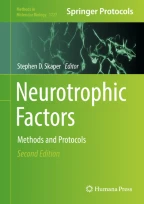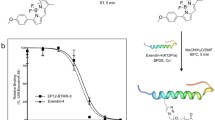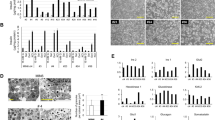Rat Pancreatic Beta-Cell Culture

In this chapter, we describe the methods used to culture mainly rat pancreatic beta cells. We consider necessary to use this approach to get more information about physiological, biophysical, and molecular biology characteristics of primary beta cells. Most of the literature published has been developed in murine and human beta-cell lines. However, there are many differences between tumoral cell lines and native cells because, in contrast to cell lines, primary cells do not divide. Moreover, cell lines can be in various stages of the cell cycle and thus have a different sensitivity to glucose, compared to primary cells. Finally, for these reasons, cell lines can be heterogeneous, as the primary cells are. The main problem in using primary beta cells is that despite that they are a majority within a culture they appear mixed with other kinds of pancreatic islet cells. If one needs to identify single cells or has an only beta-cell composition, it is necessary to process the sample further. For example, one may obtain an enriched population of beta cells using fluorescence-activated cell sorting or identify single cells with the reverse hemolytic plaque assay. The other problem is that cells change with time in culture, becoming old and losing some characteristics, and so must be used preferentially during the first week. The development of human beta-cell cultures is of importance in medicine because we hope one day to be able to transplant viable beta cells to patients with diabetes mellitus type 1.
This is a preview of subscription content, log in via an institution to check access.
Access this chapter
Similar content being viewed by others

Rapid, high efficiency isolation of pancreatic ß-cells
Article Open access 02 September 2015
The quest to make fully functional human pancreatic beta cells from embryonic stem cells: climbing a mountain in the clouds
Article 29 July 2016

Establishment of a long-term stable β-cell line and its application to analyze the effect of Gcg expression on insulin secretion
Article Open access 12 January 2021
References
- Heller RS (2010) The comparative anatomy of islets. Adv Exp Med Biol 654:21–37. https://doi.org/10.1007/978-90-481-3271-3_2ArticlePubMedGoogle Scholar
- Avolio F, Pfeifer A, Courtney M, Gjernes E, Ben-Othman N, Vieira A, Druelle N, Faurite B, Collombat P (2013) From pancreas morphogenesis to beta-cell regeneration. Curr Top Dev Biol 106:217–238. https://doi.org/10.1016/B978-0-12-416021-7.00006-7ArticleCASPubMedGoogle Scholar
- Arous C, Wehrle-Haller B (2017) Role and impact of the extracellular matrix on integrin-mediated pancreatic beta-cell functions. Biol Cell 109:223. https://doi.org/10.1111/boc.201600076ArticleCASPubMedGoogle Scholar
- Lacy PE, Kostianovsky M (1967) Method for the isolation of intact islets of Langerhans from the rat pancreas. Diabetes 16(1):35–39 ArticleCASPubMedGoogle Scholar
- Larque C, Velasco M, Barajas-Olmos F, Garcia-Delgado N, Chavez-Maldonado JP, Garcia-Morales J, Orozco L, Hiriart M (2016) Transcriptome landmarks of the functional maturity of rat beta-cells, from lactation to adulthood. J Mol Endocrinol 57(1):45–59. https://doi.org/10.1530/JME-16-0052ArticleCASPubMedGoogle Scholar
- Rabinovitch A, Russell T, Shienvold F, Noel J, Files N, Patel Y, Ingram M (1982) Preparation of rat islet B-cell-enriched fractions by light-scatter flow cytometry. Diabetes 31(11):939–943. https://doi.org/10.2337/diacare.31.11.939ArticleCASPubMedGoogle Scholar
- Kohler M, Dare E, Ali MY, Rajasekaran SS, Moede T, Leibiger B, Leibiger IB, Tibell A, Juntti-Berggren L, Berggren PO (2012) One-step purification of functional human and rat pancreatic alpha cells. Integr Biol (Camb) 4(2):209–219. https://doi.org/10.1039/c2ib00125jArticleGoogle Scholar
- Vandewinkel M, Maes E, Pipeleers D (1982) Islet cell analysis and purification by light scatter and autofluorescence. Biochem Biophys Res Commun 107(2):525–532. https://doi.org/10.1016/0006-291x(82)91523-6ArticleCASGoogle Scholar
- Bessey OA, Lowry OH, Love RH (1949) The fluorometric measurement of the nucleotides of riboflavin and their concentration in tissues. J Biol Chem 180(2):755–769 CASPubMedGoogle Scholar
Acknowledgments
This work was supported by DGAPA-PAPIIT IN210817, IV-100116, and IN211416 grant and by CONACYT CB-253222.
Author information
- Neuroscience Division, Department of Cognitive Neuroscience, Instituto de Fisiología Celular, Universidad Nacional Autónoma de México, Circuito Exterior s/n, Ciudad Universitaria, México D.F., Mexico Myrian Velasco, Carlos Larqué, Carlos Manlio Díaz-García, Carmen Sanchez-Soto & Marcia Hiriart
- Department of Neurobiology, Harvard Medical School, Boston, MA, USA Carlos Manlio Díaz-García
- Myrian Velasco



